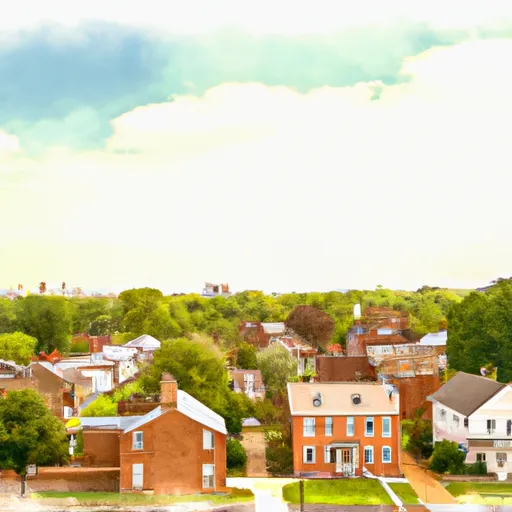-
 Snoflo Premium
Snoflo Premium
Get unlimited access to all our content
With no Ad interruptions! - Start Your Free Trial Login with existing account
Yardley
Eden Index
Climate
9.7
•
Recreation
2.8
•
Community
4.1
•
Safeguard
5.9/10

Yardley, Pennsylvania is a charming borough located in Bucks County, in the eastern part of the state. The climate in Yardley is classified as a humid continental climate, characterized by hot summers and cold winters. Average temperatures in summer range from the mid-70s to low 80s °F, while winter temperatures typically hover around freezing point, with occasional snowfall.
Yardley is blessed with beautiful natural surroundings, including the Delaware River, which flows along its eastern border. This river is a significant hydrological feature, providing opportunities for various outdoor activities such as kayaking, canoeing, and fishing. Additionally, the Delaware Canal State Park runs through Yardley, offering scenic hiking and biking trails, perfect for nature enthusiasts and outdoor recreation.
If you're seeking additional outdoor recreation opportunities, nearby parks like Core Creek Park and Tyler State Park offer expansive green spaces for picnicking, hiking, and biking. These parks also have lakes where visitors can enjoy boating and fishing. With its picturesque landscapes and diverse range of outdoor activities, Yardley is an ideal destination for nature lovers and those seeking to explore the great outdoors.
What is the Eden Index?
The Snoflo Eden Index serves as a comprehensive rating system for regions, evaluating their desirability through a holistic assessment of climate health, outdoor recreation opportunities, and natural disaster risk, acknowledging the profound impact of these factors on livability and well-being.
Climate Health Indicator (CHI): 9.7
Yardley receives approximately
1197mm of rain per year,
with humidity levels near 76%
and air temperatures averaging around
12°C.
Yardley has a plant hardyness factor of
7, meaning
plants and agriculture in this region tend to thrive during the non-winter months.
By considering the ideal temperature range, reliable water supplies, clean air, and stable seasonal rain or snowpacks, the Climate Health Indicator (CHI) underscores the significance of a healthy climate as the foundation for quality living.
A healthy climate is paramount for ensuring a high quality of life and livability in a region, fostering both physical well-being and environmental harmony. This can be characterized by ideal temperatures, reliable access to water supplies, clean air, and consistent seasonal rain or snowpacks.
Weather Forecast
Streamflow Conditions
Upper Delaware
Area Rivers
Upper Delaware
Snowpack Depths
Upper Delaware
Reservoir Storage Capacity
Upper Delaware
Groundwater Levels
Recreational Opportunity Index (ROI): 2.8
The Recreational Opportunity Index (ROI) recognizes the value of outdoor recreational options, such as parks, hiking trails, camping sites, and fishing spots, while acknowledging that climate plays a pivotal role in ensuring the comfort and consistency of these experiences.
Access to outdoor recreational opportunities, encompassing activities such as parks, hiking, camping, and fishing, is crucial for overall well-being, and the climate plays a pivotal role in enabling and enhancing these experiences, ensuring that individuals can engage in nature-based activities comfortably and consistently.
Camping Areas
| Campground | Campsites | Reservations | Toilets | Showers | Elevation |
|---|---|---|---|---|---|
| Mohican Walk-In Campsites | 7 | 927 ft | |||
| Spruce Run Recreation Area | 65 | 309 ft | |||
| Atsion - Wharton State Forest | 50 | 51 ft | |||
| Voorhees State Park | 45 | 752 ft | |||
| Willow Pond Camp Military - Ft Dix | None | 136 ft |
Nearby Ski Areas
Catastrophe Safeguard Index (CSI):
The Catastrophe Safeguard Index (CSI) recognizes that natural disaster risk, encompassing floods, fires, hurricanes, and tornadoes, can drastically affect safety and the overall appeal of an area.
The level of natural disaster risk in a region significantly affects safety and the overall livability, with climate change amplifying these risks by potentially increasing the frequency and intensity of events like floods, fires, hurricanes, and tornadoes, thereby posing substantial challenges to community resilience and well-being.
Community Resilience Indicator (CRI): 4.1
The Community Resilience Indicator (CRI) recognizes that education, healthcare, and socioeconomics are crucial to the well-being of a region. The CRI acknowledges the profound impact of these elements on residents' overall quality of life. By evaluating educational resources, healthcare accessibility, and economic inclusivity, the index captures the essential aspects that contribute to a thriving community, fostering resident satisfaction, equity, and social cohesion.

